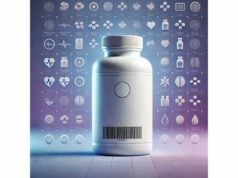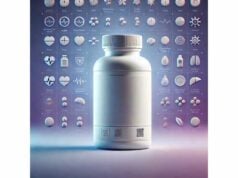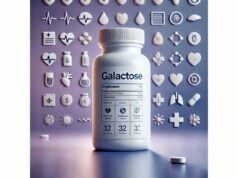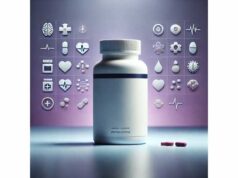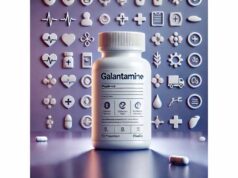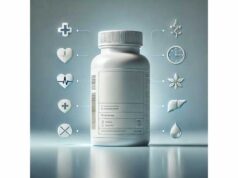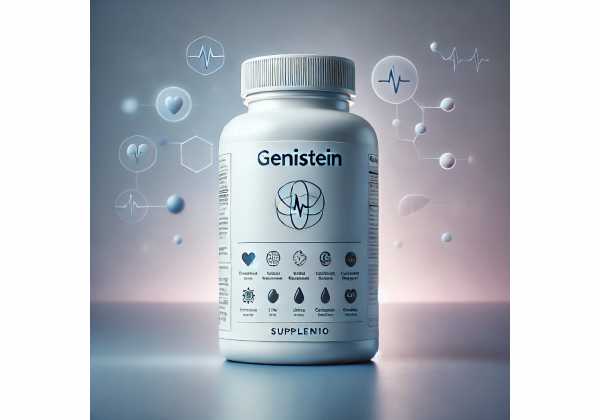
Genistein is a naturally occurring isoflavone most abundant in soybeans and fermented soy foods. It is often promoted for easing menopausal hot flashes, supporting bone and heart health, and providing antioxidant protection. Unlike synthetic hormones, genistein acts as a selective estrogen receptor modulator—meaning its effects vary by tissue and existing hormone levels. Quality matters: extracts can differ widely in their genistein content and bioavailability. In this guide, you will find practical advice on how genistein works, what benefits are realistically supported by human studies, how to choose and use a supplement, safe dosage ranges, and who should avoid it. You will also see where the evidence is strong, mixed, or early-stage—so you can make an informed, people-first decision about whether genistein fits your goals and medical history.
Key Insights
- May modestly reduce menopausal vasomotor symptoms and support healthy blood pressure in some adults.
- Typical supplemental intake: 30–60 mg genistein/day or 40–80 mg/day total soy isoflavones.
- Safety note: monitor thyroid labs if you have hypothyroidism or take levothyroxine; separate dosing from medication by several hours.
- Avoid during pregnancy and breastfeeding; people with estrogen-sensitive conditions or on endocrine therapy should consult their oncology team first.
Table of Contents
- What is genistein and how it works
- Evidence-backed benefits
- How to use genistein safely
- How much genistein per day
- Side effects and who should avoid
- What the research says overall
What is genistein and how it works
Genistein is one of the main bioactive isoflavones in soy, typically present as genistin (a sugar-bound form) in foods and converted to genistein (the aglycone) during digestion. It belongs to a group of plant compounds that interact with estrogen receptors (ERs), notably ER-β more than ER-α. This selective binding partly explains why genistein’s effects can be tissue-specific and milder than synthetic estrogens. In low-estrogen states (such as postmenopause), genistein may behave more like a weak estrogen agonist, while in higher-estrogen contexts, its net effect can be neutral or even antagonistic. Beyond ER binding, genistein also influences cell signaling, antioxidant defenses, and enzymes such as tyrosine kinases and 5-lipoxygenase. These nonhormonal actions contribute to its research in cardiovascular, bone, metabolic, and neuroprotective domains.
Absorption and metabolism shape how genistein feels in real life use. Aglycone forms are absorbed more readily than glycosides; taking genistein with meals (especially those containing fat) generally improves uptake. Peak blood levels occur within a few hours, and conjugation in the liver (to glucuronides and sulfates) leads to circulating metabolites with biological activity. The apparent half-life is roughly 6–10 hours, which is why many protocols split the daily amount into two doses. Gut microbiome differences also matter. While genistein itself does not require conversion to equol (that is mainly a daidzein story), microbial composition still affects overall isoflavone metabolism and interindividual response. Antibiotics, fiber timing, and probiotic status can all shift exposure.
It is helpful to distinguish genistein from “soy isoflavones” more broadly. Many clinical trials used mixed isoflavone extracts standardized to genistein, daidzein, and glycitein—sometimes with most benefits correlating with the total isoflavone dose, sometimes with genistein-specific content. In retail supplements, labels may show “isoflavones (as genistein, daidzein, glycitein)” and separately indicate “genistein (as aglycone equivalents).” When comparing products or studies, make sure you are looking at comparable units (mg genistein vs mg total isoflavones; aglycone equivalents vs glycosides). This small detail prevents dosing errors that lead to under- or overestimation of what you are actually taking.
Finally, context matters. Genistein from whole soy foods arrives packaged with protein, fiber, and minerals—and intakes from traditional diets are typically lower per dose but sustained over time. Supplemental genistein can deliver targeted, higher amounts, which may be useful for specific goals but also raises questions about safety, interactions, and duration. The sections below synthesize what human research suggests and translate it into clear, practical guidance.
Evidence-backed benefits
Menopausal vasomotor symptoms (VMS). Many trials have explored whether isoflavones ease hot flashes and night sweats. Results are mixed—some show meaningful relief, others find small or no effects. Differences in extract composition, dose, baseline symptom frequency, and placebo responses help explain the variability. A number of systematic reviews suggest isoflavones can reduce VMS frequency and severity for some women, especially after several weeks of consistent use. Benefits are usually modest compared with hormone therapy, but may be worthwhile for those seeking nonhormonal options. Expect a gradual onset; trial periods of 8–12 weeks are reasonable before judging response.
Cardiometabolic markers. Genistein and soy isoflavones are associated with small improvements in certain cardiovascular risk markers. Randomized trials and pooled analyses report modest reductions in blood pressure in adults with higher baseline values, and favorable shifts in LDL cholesterol when isoflavones are combined with soy protein as part of a heart-healthy diet. These effects are not dramatic, and lifestyle foundations (dietary pattern, activity, weight management, sleep) remain the cornerstone. Still, they point to a supportive role for genistein within a broader cardiometabolic plan.
Bone health. Estrogen decline accelerates bone turnover postmenopause. Genistein’s preference for ER-β, along with osteoblast-supportive and osteoclast-modulating actions, has made it a candidate for maintaining bone mineral density (BMD). Some randomized trials—particularly those using genistein-rich standardized doses over 12–24 months—show maintenance or small gains in BMD at specific sites, often alongside adequate calcium and vitamin D. Not every study confirms this, and benefits appear site-specific and dose-dependent. For individuals unable to use standard osteoporosis medications, genistein may be considered as an adjunct—not a replacement—after discussing expectations with a clinician.
Skin, cognition, and other areas. Antioxidant and collagen-supporting mechanisms have led to exploratory studies in skin elasticity and photoprotection; preliminary findings are encouraging but not definitive. Small studies have also examined mood and cognitive endpoints with mixed results. In oncology contexts, diet-based soy intake is generally considered safe for most people and is associated with favorable outcomes in several cohorts, while high-dose isoflavone supplements remain less well studied in cancer survivors receiving active endocrine therapies. That distinction—foods versus concentrated pills—matters in real-world decision-making and is covered further under safety.
What to expect in practice. Isoflavones are not “instant” supplements. Symptom changes, if they occur, tend to appear gradually over weeks. People with mild-to-moderate VMS, borderline blood pressure elevation, or early osteopenia may be likelier to notice small but meaningful improvements, especially when pairing genistein with diet and lifestyle steps. Tracking changes (e.g., a symptom diary for hot flashes; home blood pressure log; DEXA scans for bone) helps you evaluate personal benefit rather than relying on general claims.
How to use genistein safely
Choose the right form. Look for extracts standardized by genistein aglycone equivalents to make cross-product comparisons easier. Many products also list total isoflavones. If your goal is menopausal symptom support or bone maintenance, a label that clearly states “genistein (aglycone equivalents) per capsule” reduces guesswork. Avoid proprietary blends that don’t disclose per-serving amounts of genistein.
Start low, then personalize. A common approach is to begin around 30 mg genistein/day, taken with food, and evaluate tolerance and response after 2–4 weeks. If needed, titrate toward 50–60 mg/day. Splitting the daily amount (morning and evening) can smooth serum levels given the ~6–10-hour half-life. If you are already eating soy foods, remember those contribute isoflavones; the aim is a total intake that matches your goals without overshooting.
Timing with medications. Space genistein at least 4 hours away from levothyroxine and other thyroid medications to avoid absorption interference. For people on warfarin, direct oral anticoagulants, or antiplatelet therapies, discuss potential additive effects and monitoring with your prescriber before starting. If you take aromatase inhibitors or selective estrogen receptor modulators (e.g., tamoxifen), get individualized oncology guidance before considering concentrated isoflavone supplements.
Stacking and combinations. Many “menopause blends” combine genistein with daidzein, red clover, black cohosh, or magnolia. While combinations can be reasonable, they complicate troubleshooting if side effects occur. When possible, introduce one variable at a time so you know what works. For bone health, ensure adequate calcium (1,000–1,200 mg/day total) and vitamin D (typically 800–2,000 IU/day unless your labs indicate otherwise); resistance training and impact exercise remain essential.
Diet partners. Whole soy foods—such as tofu, tempeh, and miso—offer protein, minerals, and fiber that complement a supplement. Taking genistein with a meal may improve absorption and reduce GI upset. High-fiber supplements taken simultaneously can lower isoflavone absorption; if you use psyllium or similar products, separate them by a couple of hours.
How to gauge success. Use simple, objective measures:
- VMS: track daily frequency and severity for 8–12 weeks.
- Blood pressure: measure at home, twice daily, for two weeks before and after starting.
- Bone: compare DEXA scans over 12–24 months; day-to-day changes won’t be visible.
If there’s no meaningful improvement after a fair trial, reassess dose, product quality, or whether genistein is the right tool for your goals.
How much genistein per day
Typical supplemental range. Most human studies and practical protocols use 30–60 mg genistein/day, often framed within 40–80 mg/day total isoflavones (genistein, daidzein, glycitein combined). Some trials used standardized preparations delivering ~54 mg genistein/day for bone outcomes. There is no universally accepted “therapeutic dose,” and more is not necessarily better—especially for those with thyroid issues, on endocrine therapies, or who experience headaches or GI symptoms at higher intakes.
Dosing formats. You’ll see capsules with:
- Labeled genistein (aglycone equivalents) per capsule (e.g., 25–30 mg).
- Total isoflavones per serving (e.g., 60–80 mg) with genistein content specified as a percentage.
- Mixed “menopause formulas” where genistein is one of several actives.
When labels list only “soy extract” without standardization, it’s difficult to predict effects. Favor transparency.
Frequency and duration. Given a half-life of about 6–10 hours, split dosing (e.g., breakfast and dinner) is sensible. Allow 8–12 weeks to evaluate symptom changes, then decide whether to continue, adjust, or stop. For bone health, meaningful assessment requires 12–24 months with appropriate nutrition and exercise; genistein is an adjunct, not a stand-alone therapy for osteoporosis.
Food equivalents. Traditional diets with routine soy intake may provide 10–25 mg/day of isoflavones, not all as genistein. For reference, a typical serving of tofu or tempeh might supply 20–40 mg total isoflavones depending on preparation and portion size. That’s why many people prefer to combine soy foods with a modest supplement dose rather than relying on high-dose pills alone.
Special populations.
- Perimenopause: responses can be more variable due to fluctuating endogenous hormones. Start low and monitor.
- Older adults with polypharmacy: review interactions and spacing with medications; prioritize dietary approaches.
- Vegetarians/vegans already eating soy: consider the total daily isoflavone load before adding a supplement.
When to stop or adjust. If you develop persistent headaches, new GI upset, breast tenderness, irregular vaginal bleeding, or if thyroid labs drift off-target, pause use and consult your clinician. If you see no benefit after a fair trial at ~50–60 mg/day, it’s reasonable to discontinue.
Side effects and who should avoid
Common tolerability. Most adults tolerate genistein well at customary amounts. The most frequent complaints are mild GI upset, bloating, or headache—often improved by taking with food or lowering the dose. Because isoflavones can influence fluid regulation and vasodilation, a subset of users report dizziness when starting; hydration and dose splitting can help.
Hormone-sensitive conditions. Diet-based soy intake is generally regarded as safe for most adults, including many with past breast cancer, and is linked with favorable outcomes in several large observational cohorts. Concentrated isoflavone supplements are not the same as whole foods. People with estrogen receptor–positive cancers or those on endocrine therapies (e.g., aromatase inhibitors, tamoxifen) should speak with their oncology team before using genistein supplements. The balance of evidence supports soy foods, but data on high-dose genistein pills during active treatment remain limited.
Thyroid considerations. In euthyroid adults, typical isoflavone intakes seldom produce clinically significant shifts in thyroid hormones. However, genistein can interfere with thyroid hormone absorption if taken too close to levothyroxine. If you have hypothyroidism, separate dosing by at least 4 hours, and ask your clinician whether to recheck TSH after starting or changing the dose. Those with iodine deficiency may be more sensitive to goitrogenic effects; adequate iodine nutrition is prudent.
Medication interactions.
- Levothyroxine: absorption competition; space apart.
- Anticoagulants/antiplatelets: theoretical additive effects; monitor as advised.
- Endocrine therapies: discuss case-by-case.
- Antibiotics: may alter isoflavone metabolism; responses can temporarily change.
Pregnancy and lactation. Avoid supplemental genistein during pregnancy and breastfeeding due to insufficient safety data at concentrated doses. Food-level soy intake is a separate discussion to have with your obstetric provider.
Pediatrics and adolescents. Do not use genistein supplements unless specifically recommended by a pediatric specialist for a defined indication. Dietary soy foods in culturally typical amounts are generally acceptable.
Allergies and intolerances. Individuals with soy allergy should not use soy-derived genistein supplements. Non-soy genistein sources exist but are less common; verify manufacturing details if you have a documented allergy.
Lab monitoring. For at-risk users, consider:
- TSH 6–8 weeks after initiation if you have thyroid disease.
- Blood pressure at home if starting genistein for cardiometabolic support.
- DEXA at clinically appropriate intervals for bone goals.
Stop and seek care if you experience unusual bleeding, new breast changes, severe abdominal pain, or other concerning symptoms.
What the research says overall
Across randomized trials and meta-analyses, genistein and mixed soy isoflavones show modest, variable benefits that depend on dose, duration, baseline status, and the outcome studied. For vasomotor symptoms, some pooled analyses report reductions in hot flash frequency and severity compared with placebo, particularly after consistent use for several weeks. Other analyses—especially those including many small or heterogeneous trials—find smaller or nonsignificant effects. This inconsistency reflects differences in product standardization (aglycone vs glycoside content), total isoflavone dose, participant characteristics, and placebo responses common in symptom studies.
For cardiometabolic health, the signal is cautiously favorable. Isoflavone supplementation may produce small decreases in systolic and diastolic blood pressure and mild improvements in LDL cholesterol, especially when combined with soy protein and dietary change. These changes are incremental, not transformative—a supportive layer, not a substitute for comprehensive risk management.
For bone, the picture is nuanced. Some longer-duration, genistein-rich protocols demonstrate maintenance or slight gains in bone mineral density at specific sites, but findings are not uniform across all skeletal regions or studies. Given the multifactorial nature of bone remodeling, isoflavones are best viewed as adjunctive to adequate calcium, vitamin D, resistance training, and, where indicated, pharmacotherapy.
Safety outcomes in adults are generally reassuring at customary doses (e.g., 30–60 mg genistein/day), with GI symptoms and headache being the most common adverse effects. Thyroid function in euthyroid individuals is typically unchanged, though timing with levothyroxine is important for those with hypothyroidism. In oncology, large cohorts consistently support soy foods as safe and potentially beneficial; high-dose supplements remain an area for individualized discussion.
Bottom line: Genistein is a reasonable nonhormonal option to try for menopausal symptom relief and as a small supportive measure for cardiometabolic and bone health—provided expectations are realistic, quality and dosing are thoughtful, and personal risks are reviewed. A structured 8–12-week trial with tracking gives you the clearest answer to “Does this help me?”
References
- The health effects of soy: A reference guide for health professionals 2022 (Review)
- The effect of soy isoflavones given to women in randomized controlled trials: A meta-analysis 2024 (Meta-analysis)
- The Genistein Combined Polysaccharide (GCP®) in the management of bone loss: A single-blinded, two-arm, parallel group, dose–response randomized trial 2012 (RCT)
- Soy and Cancer Risk 2024 (Official resource)
Disclaimer
This article is for educational purposes and general information only. It does not constitute medical advice and is not a substitute for professional diagnosis or treatment. Always talk with your healthcare provider before starting, stopping, or changing any supplement, especially if you have a medical condition, take prescription medications, are pregnant or breastfeeding, or have a history of hormone-sensitive cancers.
If you found this helpful, consider sharing it with a friend or on Facebook, X (formerly Twitter), or your preferred platform, and follow us for future updates. Your support helps us continue creating clear, evidence-informed guides.

